


Details
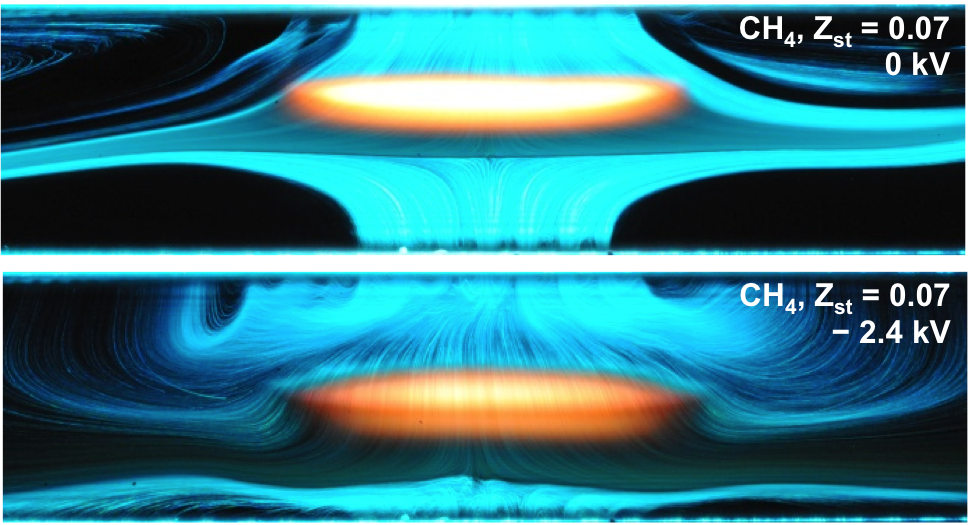
When an external electric field, E, is applied to a flame, the Lorentz force acts on the charged particles, causing them to accelerate. This triggers a directional drift velocity of the charged particles expressed as mE, where mis ion mobility. Thus, positive ions migrate toward the cathode following electric field lines, while electrons and negative ions move in the opposite direction.

Laminar coflow burner
This movement of charged particles in a hydrocarbon flame creates an electric current. When the field intensity increases, the current shows a near-parabolic increase up to a moderate external field (sub-saturated regime), and over a certain field intensity, it demonstrates a saturated value depending on the rate of ion generation (saturated regime). During this dynamic response of charged particles due to external fields, a momentum transfer from charged particles to neutral molecules generates ionic wind.
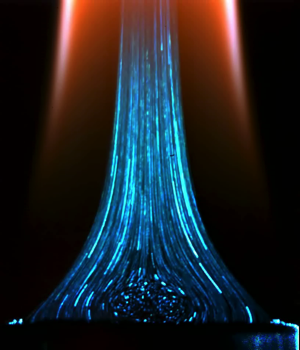
Laminar nonpremixed jet flame with AC: electromagnetically triggered vortex
In reaction zones, positive ions are in excess of negative ions; negative charge carriers include both negative ions and electrons, and thus the total number of negative charges should be equal to that of positive charges. Because the mass of electrons is negligible, so is their contribution to momentum transfer and their effect on ionic wind. Thus, positive charges are considered to be chiefly responsible for the flame response moving toward a cathode.
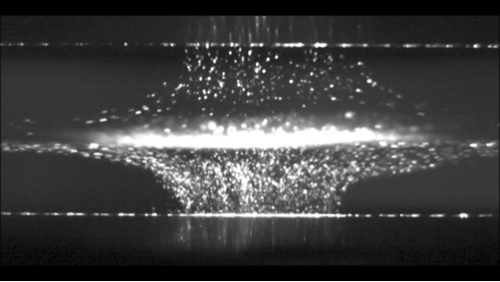
Laminar nonpremixed counterflow flame with DC: flow separation caused by bidirectional ionic wind
However, both positive and negative ions can contribute to the generation of ionic wind in opposite directions towards a cathode and anode, respectively. This bidirectional ionic wind may produce visible effects on a flow field.
We do modeling works as well as experimental studies emphasizing fundamental science beyond our observations, hope to bridge these fundamental understanding and knowledge all the way to real applications, such as engines, boilers, and any other combustors need innovation. Below is our fleet to explore the ocean of discovery.
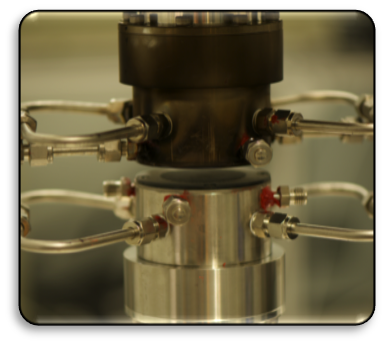
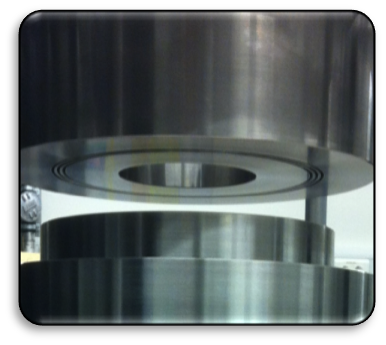
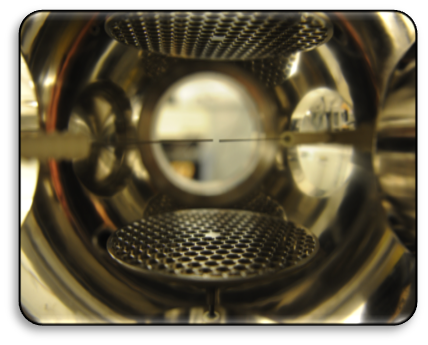
Laminar counterflow burner Annular, counterflow slot burner Constant volume combustion chamber